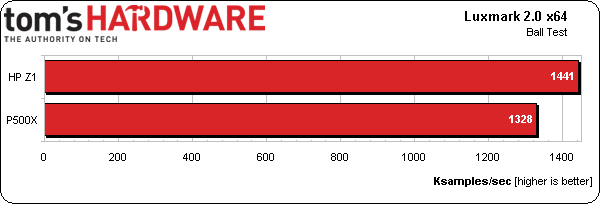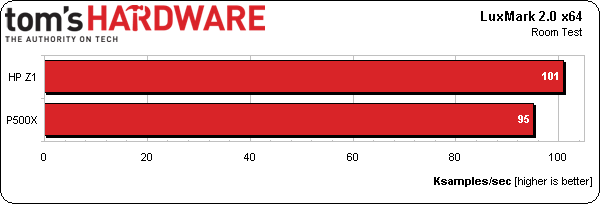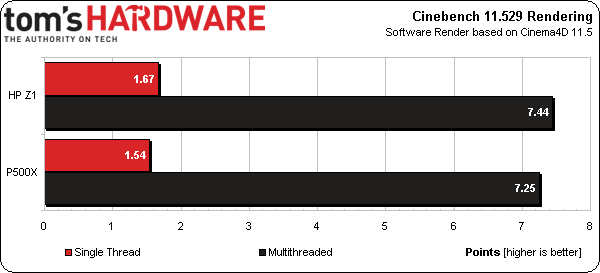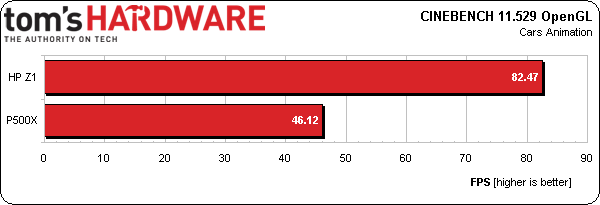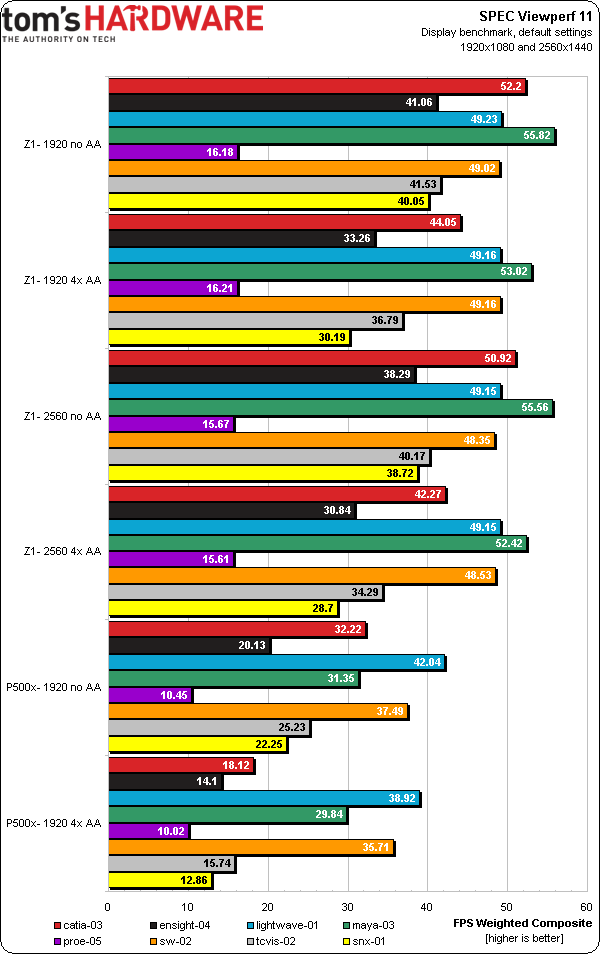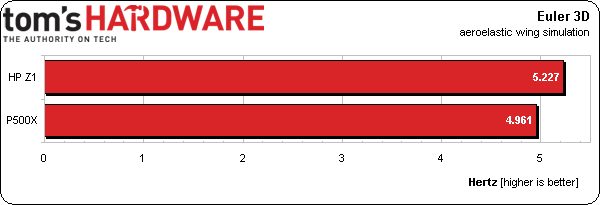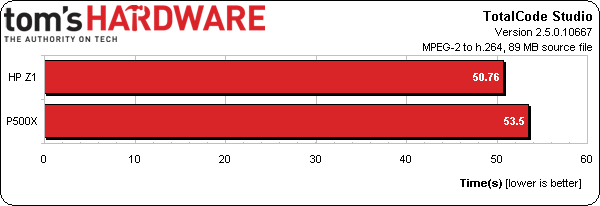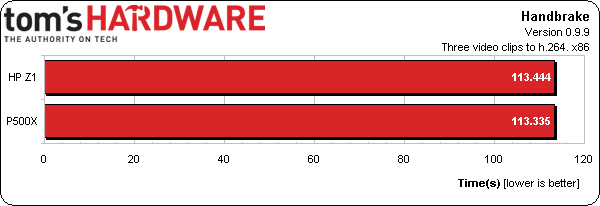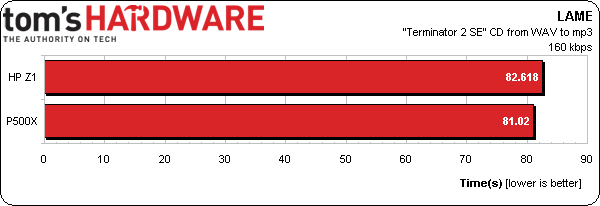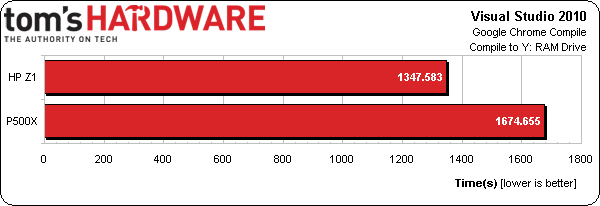HP Z1 Workstation: High-End Hardware In An All-In-One
Results: Media And Encoding
LuxMark 2.0
This OpenCL-based rendering test shows the Z1 with a roughly 10 percent lead in both tests. The margin is tighter than what we saw from the V-Ray RT test, but HP still has an edge.
Cinebench
Cinebench shows the Z1 in front by 8.4 percent running on one core; it leads by two percent in the threaded version of the test. Why the difference between quad-core processors? More than likely, greater memory bandwidth helps propel performance a bit compared to the Xeon.
In the Cinebench OpenGL test, the Z1's faster GPU pulls away from the baseline machine, speeding off to a score that's 1.7 times faster.
SPECviewperf 11
The very long chart below includes all of the viewperf results. Similar to the OpenGL- and DirectX-based real-world preview tests, we ran viewperf on the Z1 at 1920x1080 and its native 2560x1440.
Even at its native resolution, the Z1 outperforms our baseline system. And as we've seen before, certain tests perform slightly better with AA on.
Euler3D
Euler3D's wing simulation, being entirely CPU-bound and with a rather small memory footprint, gives us predictable results due to the Z1's slightly faster processor and greater memory bandwidth.
TotalCode Studio
The Z1's slight improvement in our TotalCode benchmark (less than three percent) is in-line with other benchmarks where CPU speed is the deciding factor.
Get Tom's Hardware's best news and in-depth reviews, straight to your inbox.
HandBrake
The HandBrake results are inconsistent with our other tests. Despite multiple runs to check the results, the Z1 loses to the baseline system by a hair.
LAME
The same thing happens in LAME, which is single-threaded and should favor the Z1's 100 MHz-higher peak Turbo Boost frequency. Our baseline system still ends up on top though, and the only thing we can think of is lower memory latencies that might help compensate for the clock rate difference.
Visual Studio
In our Chrome compile test, the Z1 enjoys a nice lead. Our best guess to explain the difference is the Z1's two-drive RAID configuration preventing a storage bottleneck. The HP workstation's additional memory capacity and bandwidth might also come into play.
Current page: Results: Media And Encoding
Prev Page Results: 3D Modeling And Digital Audio Next Page Results: Synthetics, Compression, And Storage